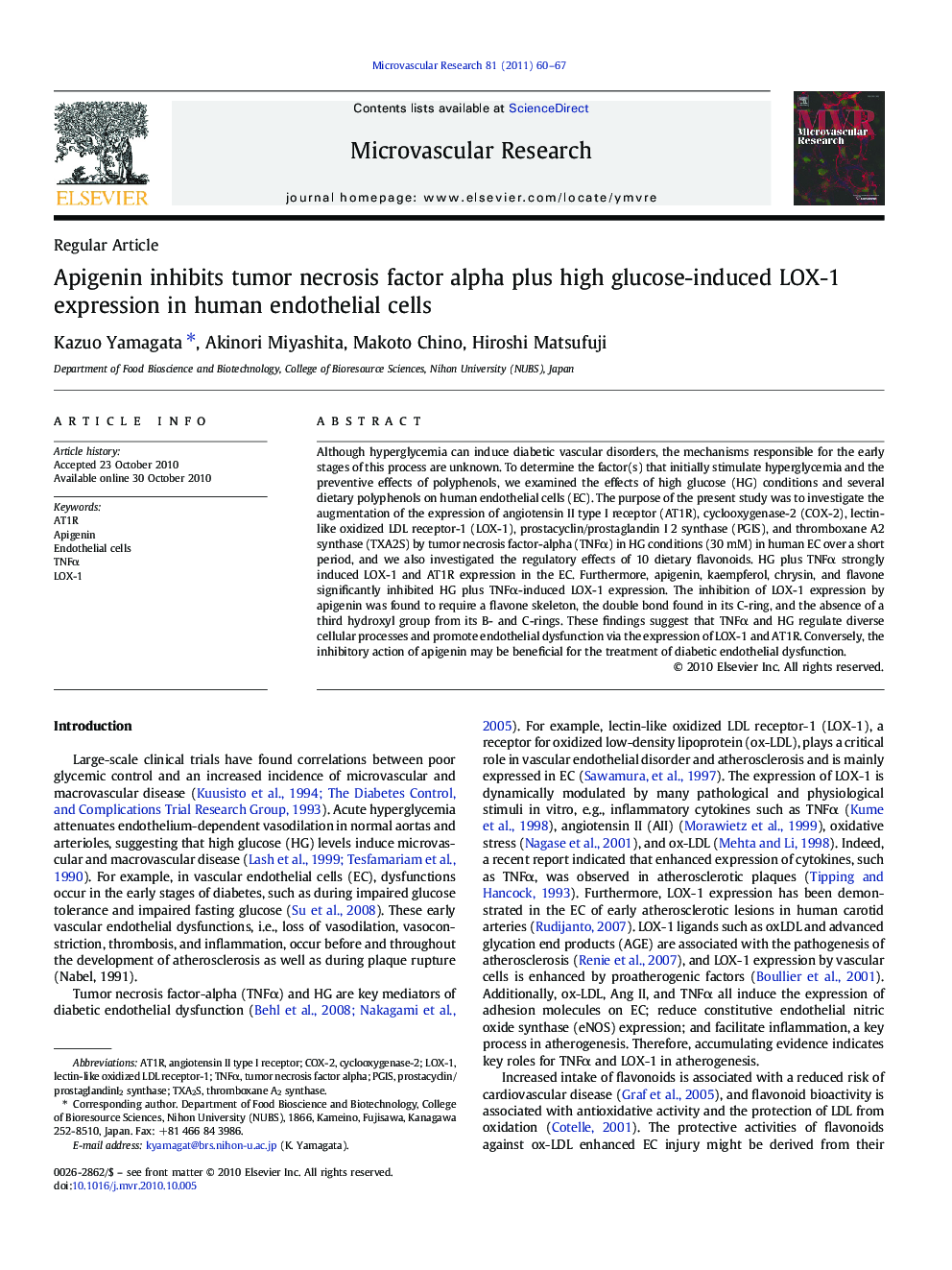| کد مقاله | کد نشریه | سال انتشار | مقاله انگلیسی | نسخه تمام متن |
|---|---|---|---|---|
| 1995017 | 1064948 | 2011 | 8 صفحه PDF | دانلود رایگان |

Although hyperglycemia can induce diabetic vascular disorders, the mechanisms responsible for the early stages of this process are unknown. To determine the factor(s) that initially stimulate hyperglycemia and the preventive effects of polyphenols, we examined the effects of high glucose (HG) conditions and several dietary polyphenols on human endothelial cells (EC). The purpose of the present study was to investigate the augmentation of the expression of angiotensin II type I receptor (AT1R), cyclooxygenase-2 (COX-2), lectin-like oxidized LDL receptor-1 (LOX-1), prostacyclin/prostaglandin I 2 synthase (PGIS), and thromboxane A2 synthase (TXA2S) by tumor necrosis factor-alpha (TNFα) in HG conditions (30 mM) in human EC over a short period, and we also investigated the regulatory effects of 10 dietary flavonoids. HG plus TNFα strongly induced LOX-1 and AT1R expression in the EC. Furthermore, apigenin, kaempferol, chrysin, and flavone significantly inhibited HG plus TNFα-induced LOX-1 expression. The inhibition of LOX-1 expression by apigenin was found to require a flavone skeleton, the double bond found in its C-ring, and the absence of a third hydroxyl group from its B- and C-rings. These findings suggest that TNFα and HG regulate diverse cellular processes and promote endothelial dysfunction via the expression of LOX-1 and AT1R. Conversely, the inhibitory action of apigenin may be beneficial for the treatment of diabetic endothelial dysfunction.
Graphical AbstractFigure optionsDownload as PowerPoint slideResearch Highlights
► High glucose (HG) plus TNFα strongly synergistically induced LOX-1 and AT1R expression in the endothelial cells.
► On the other hand, apigenin, kaempferol, chrysin, and flavone significantly inhibited HG plus TNFα-induced LOX-1 expression.
► Inhibition of LOX-1 expression by apigenin required a flavone skeleton, the double bond found in its C-ring, and the absence of a third hydroxyl group from its B and C-rings.
► The inhibitory action of apigenin may be beneficial for the treatment of diabetic endothelial dysfunction.
Journal: Microvascular Research - Volume 81, Issue 1, January 2011, Pages 60–67